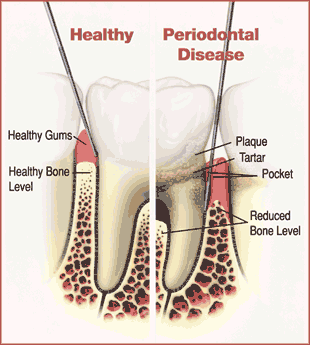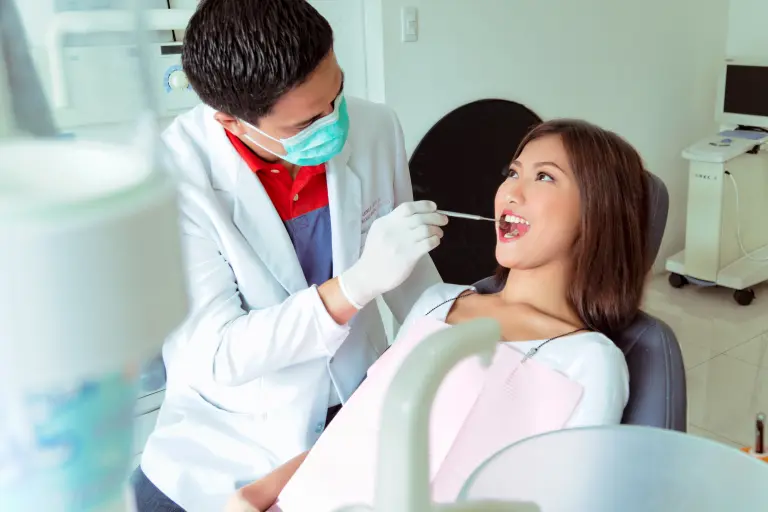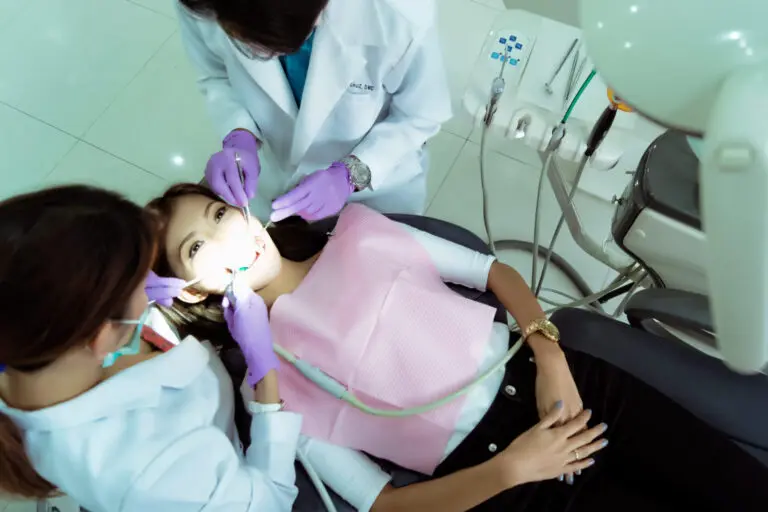Our Location
Call Us
Send a Mail
Working hours
9-6 PM Monday to Saturday
9-6 PM Monday to Saturday
Periodontal therapy involves different approaches in the elimination of bacteria out of the periodontal tissue. The presence of bacteria in periodontal tissue is the main cause of the periodontal disease known as gingivitis and periodontitis. These two conditions may be similar but actually has a lot of differences in clinical presentation, chief complaints in patients, a progression of the condition and consequential therapeutic approaches. While gingivitis affects only a soft tissue around the tooth, periodontitis affects entire periodontal tissue that consists of a dental root, alveolar bone, gums and periodontal space with its ligaments and other, mostly immune cells. Aetiology of both conditions is the same. Bacteria in these spaces lead to inflammation of periodontal tissue, whether it affects only gums or all parts of the periodontal tissue. Many researchers tried to define exact bacterial flora in periodontal diseases, and as predominated species following microbes were defined: A. actinomycetemcomitans, P. gingivalis, P. intermedia, Treponema sp. and many others.
Bacteria are mainly present in dental plaque and calculus. Therefore, lack of hygiene leads to greater accumulation of dental plaque. Besides the greater amount of dental plaque, the pH value raises above 7 which benefit bacteria as a better surrounding for their metabolic activities and growth. These bacterial activities lead to the development of acute, local infection followed by swelling redness, swelling and sometimes pain. The gums became swollen and red, more prone to bleeding during chewing and teeth brushing. In this stage gingival pockets may appear, which means that the space between the gums and the tooth became larger and deeper, leaving more empty space for new bacterial retention and multiplication and progressive impairment of the initial condition. If this condition persists without improvement of hygienic habits and removal of plaque and calculus that contain bacteria, the infection progresses and the condition gets worse. More bacteria colonize the site of infection, the objective clinical signs became more obvious and subjective complaints became more intense. In this stage the periodontal pockets start developing, that is followed by a bone loss, intensive pain and may be followed by fetor. Further propagation of infection leads to serious bone loss with the formation of deeper periodontal pockets and latest loss of teeth due to loss of periodontal ligament and bone that keeps the teeth in their place. It is important to have in mind that some other health problems or medications may affect the periodontal ligament and gums. Some In the way of affecting microcirculation in the soft tissue of oral cavity, while others may affect the salivation and consequential easier retention of dental plaque or even lead to a hyperplastic proliferation of gingiva.


When some of the named problems occur, during the first appointment with your dentist, detailed anamnesis and examination will be performed. Through the anamnesis, your dentist will get familiar with the history of the disease in your family, your oral hygiene habits. During the examination, the evaluation of your periodontal tissue will be performed with a help of scaling instruments that will reveal the level of destruction of your bone around the teeth i.e. the depth of periodontal or gingival pockets, the bleeding and plaque index. All of this is necessary in order to evaluate the stage of the disease and make the right treatment plan. In some cases, additional diagnostic procedures may be necessary. The proper radiographs might be needed, such as panoramic, retroalveolar or CBCT scans. These scans usually show the dental status that is not visible during clinical examination, but more importantly the bone status, level and type of bone resorption, if it is present. Besides this, sometimes your dentist may take a sample of your saliva or dental plaque in order to get a precise insight of your oral microbiota.
After data collection through the anamnesis, examination and further analysis and diagnostic procedures, a detailed therapeutic plan may be created and suggested. Therapy of periodontal disease cannot be done in a single visit. It usually takes time and a certain number of appointments until some improvement is evident and visible.
The main goal of therapy in periodontal disease is to eliminate the cause of the infection and infection itself. Therefore, the treatment usually starts with a proper education regard oral health habits. This is mainly related presentation and explanation of the right technique of tooth-brushing, with additional advice on how to select the right toothbrush, toothpaste and additional supplies that will help you improve your oral hygiene. Next step is professional teeth cleaning that involves tooth scaling with an ultrasound device, and plaque and pigmentation removal with special brushes and prophylactic dental pastes. Proper cleaning of subgingival spaces may be achieved with this techniques, but in some cases more invasive procedures are necessary.
After evaluation, your dentist may decide that you are a candidate for periodontal surgery. This happens mainly in the cases when periodontal pockets are too deep that root scaling cannot remove all calculus and tart with bacteria. These surgical procedures are performed in local anaesthesia so they allow you complete comfort. The surgeon will remove your gingiva in order to have a direct approach to the infected site which allows them to completely clean the dental pocket. Additionally, regenerative methods can be applied to the surgical site. This means that bone graft can be placed in the areas of extensive bone loss and covered with a membrane that will ensure the surgical site after gingiva is placed back and sutured. This procedure is called bone augmentation and can significantly extend the life of the affected tooth.
As an alternative to conventional surgical approach, in the latest years, lasers have a great impact in dentistry, especially in periodontal therapy. There are many different types of lasers that can be used in dentistry, depending on the area of implication. Erbium Yag lasers are the right choice for procedures in a soft tissue which makes them a golden standard for periodontal therapy. There are many advantages in laser treatments since the make less invasive cutting of the tissue with less postoperative swelling and pain and therefore a shorter and lighter recovery. Their ability in great bacterial reduction, with immediate coagulation, vasodilatation and improved lymphatic drainage improves the entire healing procedure with fast regeneration of affected tissue and faster formation of new gingival attachment. Besides this, postoperative scars are minimal and the entire procedure is less invasive than conventional surgical procedures with equal quality of effectiveness. The main disadvantage would be the price since these lasers are expensive, the laser procedure has a greater cost than convention surgery.
Regardless the time and money consumption of periodontal therapy, with a detailed examination and consultation with your dentist, you will get a proper treatment plan and therapy. The most important is to understand the nature of the periodontal disease, how the progression may affect you oral but also general health, and the patience in the elimination of infections and continuous control examinations in order to save your teeth for as long as possible.

